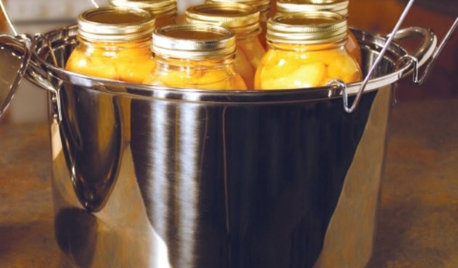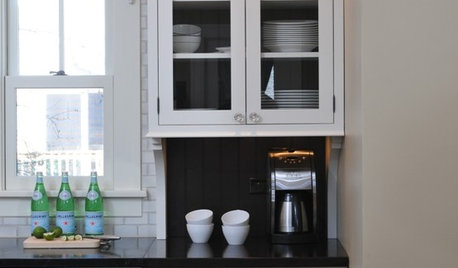Salsa and Tomato sauce questions
katiediddesign
15 years ago
Related Stories

LIFEKitchen Traditions: Tomato Season Meets a Family Legacy
Somewhere a Sicilian great-great-grandmother is smiling at a bowl of American-made sauce
Full Story
EDIBLE GARDENSSummer Crops: How to Grow Tomatoes
Plant tomato seedlings in spring for one of the best tastes of summer, fresh from your backyard
Full Story
KITCHEN DESIGN9 Questions to Ask When Planning a Kitchen Pantry
Avoid blunders and get the storage space and layout you need by asking these questions before you begin
Full Story
FARM YOUR YARDHouzz Call: Home Farmers, Show Us Your Edible Gardens
We want to see where your tomatoes, summer squashes and beautiful berries are growing this summer
Full Story
FARM YOUR YARD6 Things to Know Before You Start Growing Your Own Food
It takes time and practice, but growing edibles in the suburbs or city is possible with smart prep and patience
Full Story
PRODUCT PICKSGuest Picks: Canning, Preserving, Steaming, Dehydrating
20 products to help make fall produce last through the season and beyond
Full Story
KITCHEN DESIGNUsing White Marble: Hot Debate Over a Classic Beauty
Do you love perfection or patina? Here's how to see if marble's right for you
Full Story
GARDENING GUIDES10 Easy Edibles for First-Time Gardeners
Focus on these beginner-friendly vegetables, herbs, beans and salad greens to start a home farm with little fuss
Full Story
HOUSEKEEPINGThe Great Kitchen Cabinet Cleanup
Purge your way to a clean kitchen, then put pieces back for maximum efficiency and orderliness, with this step-by-step guide
Full Story
KITCHEN DESIGNHow to Keep Your White Kitchen White
Sure, white kitchens are beautiful — when they’re sparkling clean. Here’s how to keep them that way
Full Story


digdirt2
katiediddesignOriginal Author
Related Discussions
Have done juice, sauce, salsa, & diced, what else with tomatoes?
Q
Annie's Salsa - Tomato Sauce??
Q
Green tomato pickles/salsa question
Q
Tomato sauce and salsa only comes in a jar
Q
malna
digdirt2
katiediddesignOriginal Author
katiediddesignOriginal Author
dgkritch
digdirt2
katiediddesignOriginal Author
katiediddesignOriginal Author
digdirt2
melva02
valereee
mommiegryl
readinglady